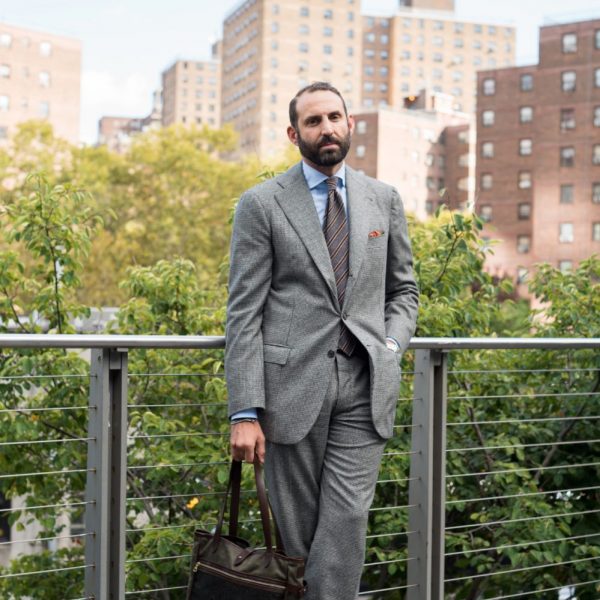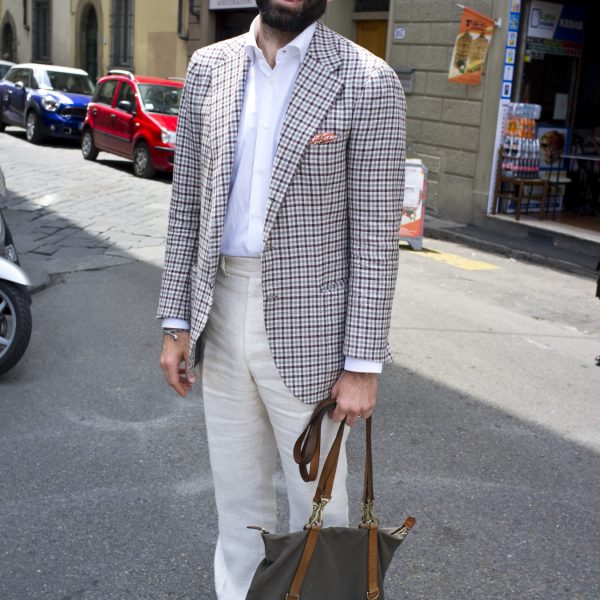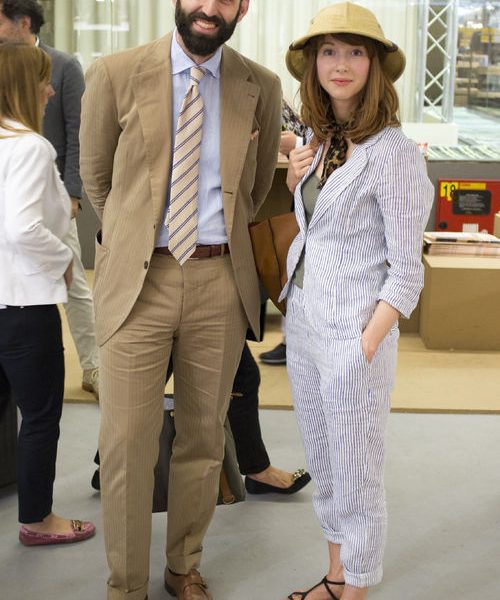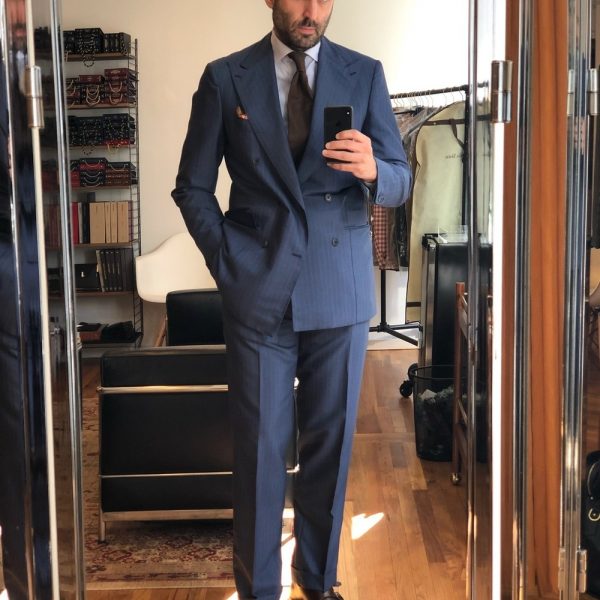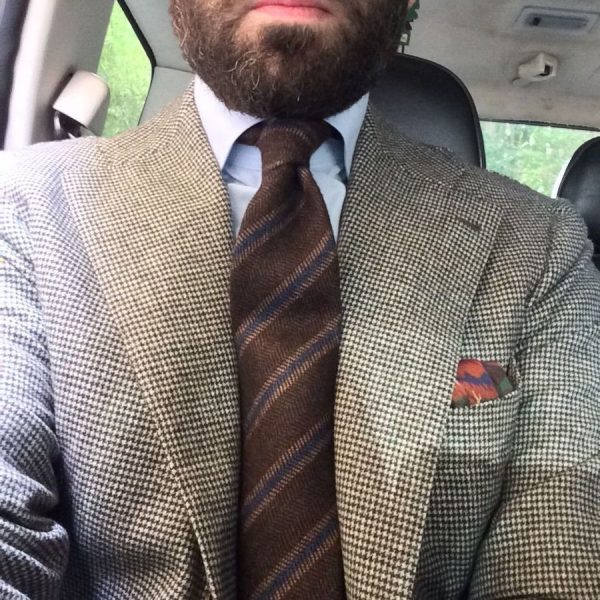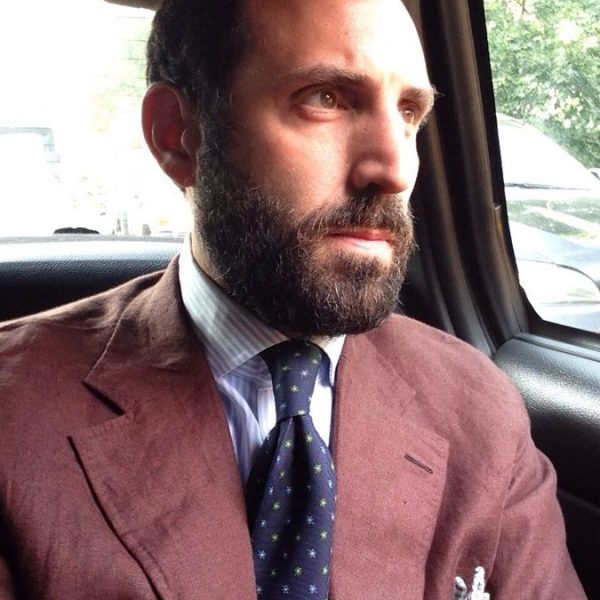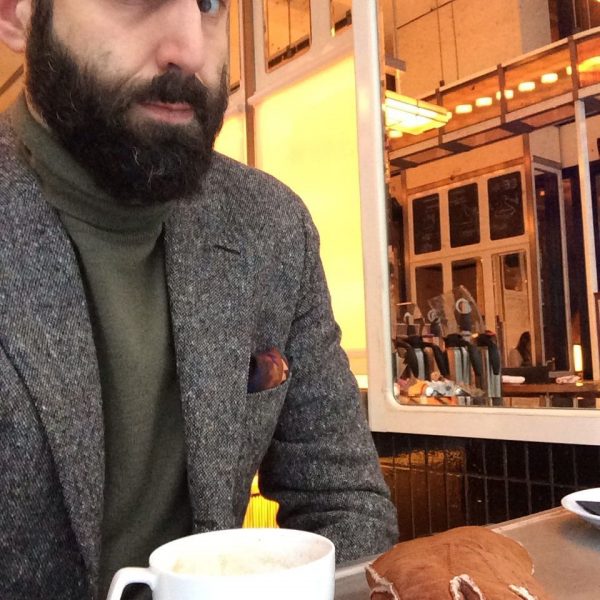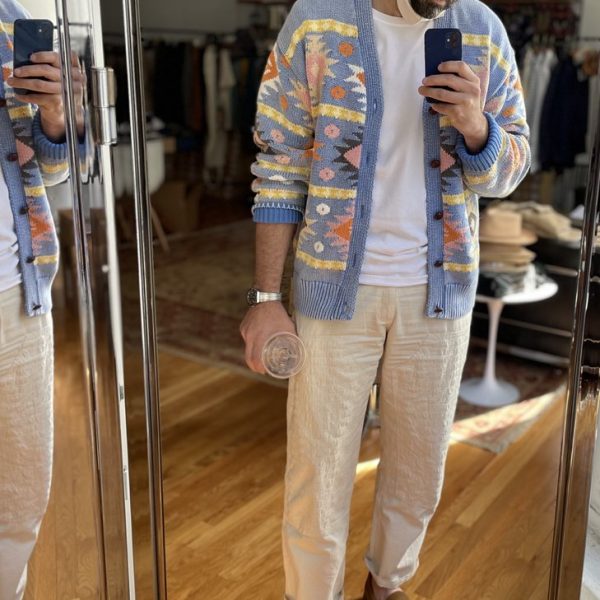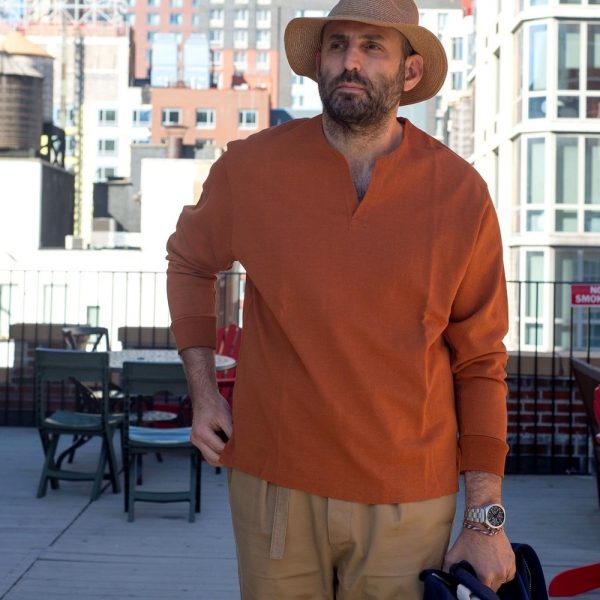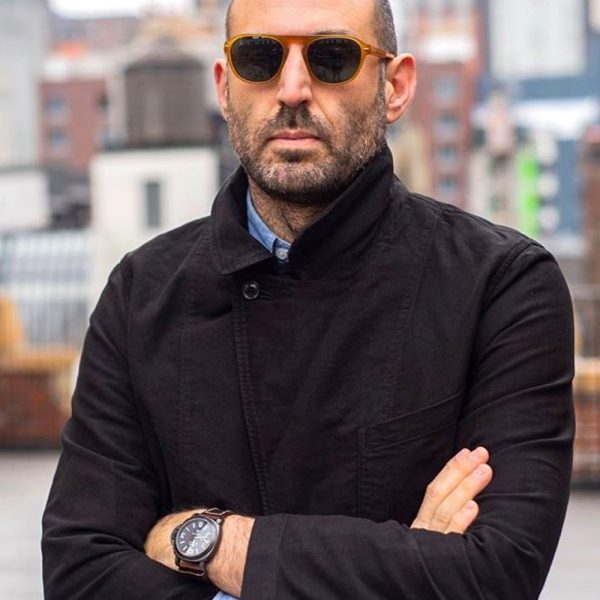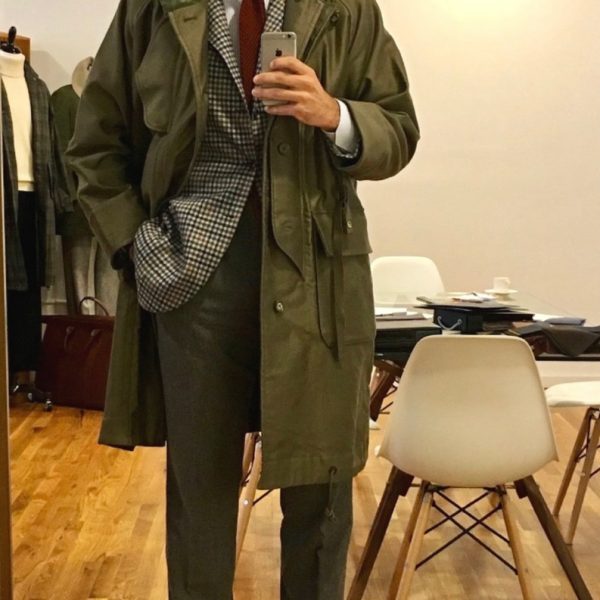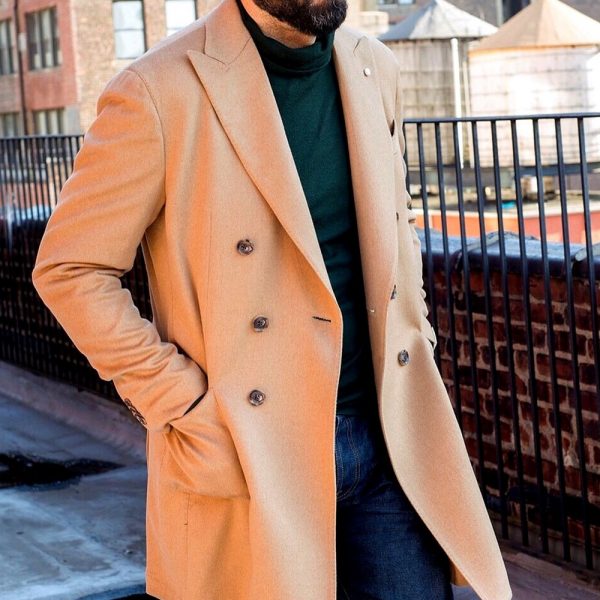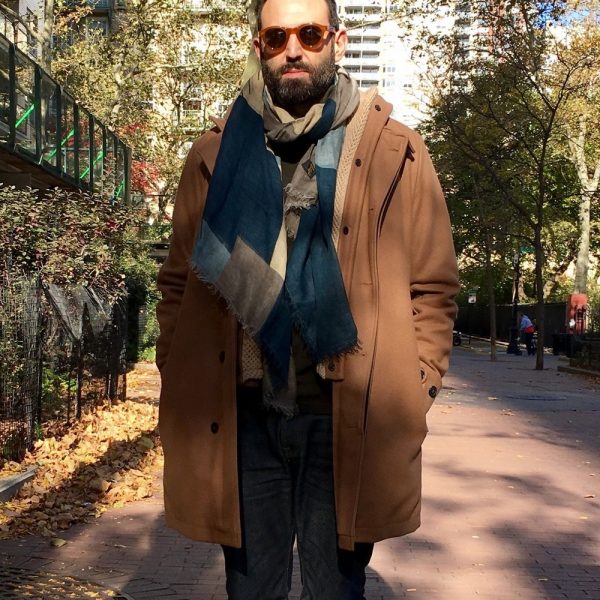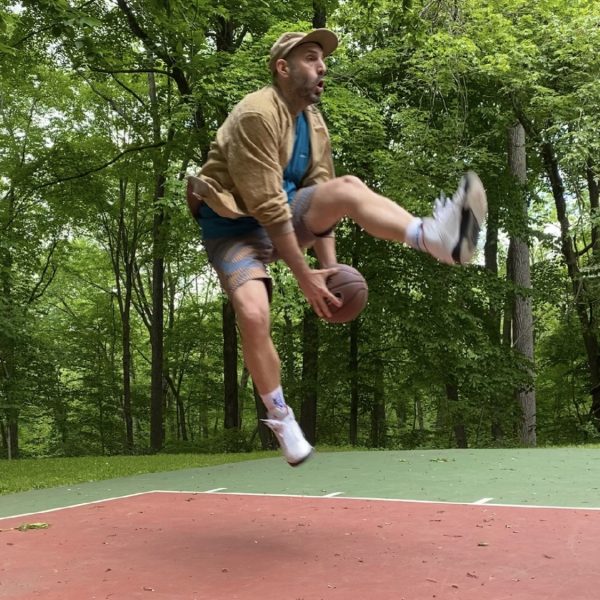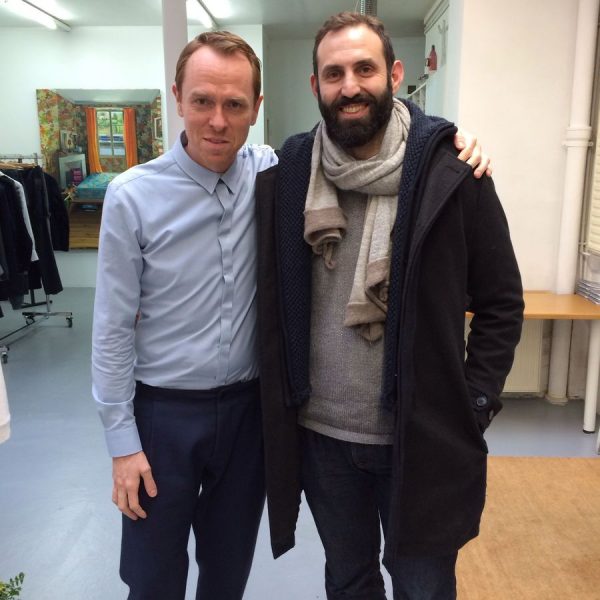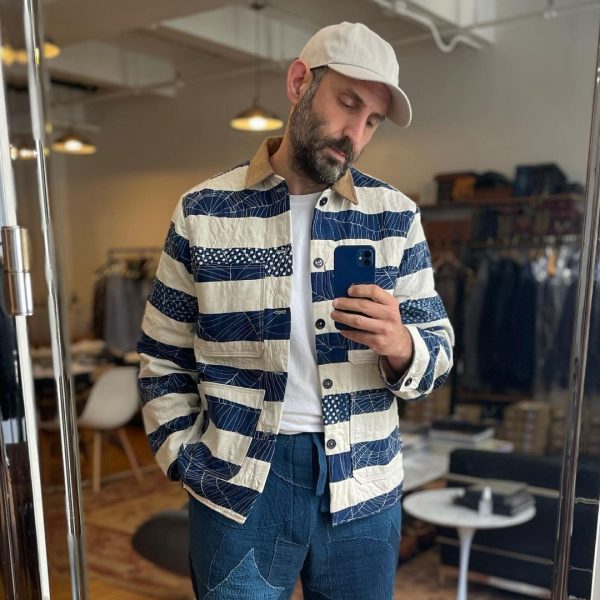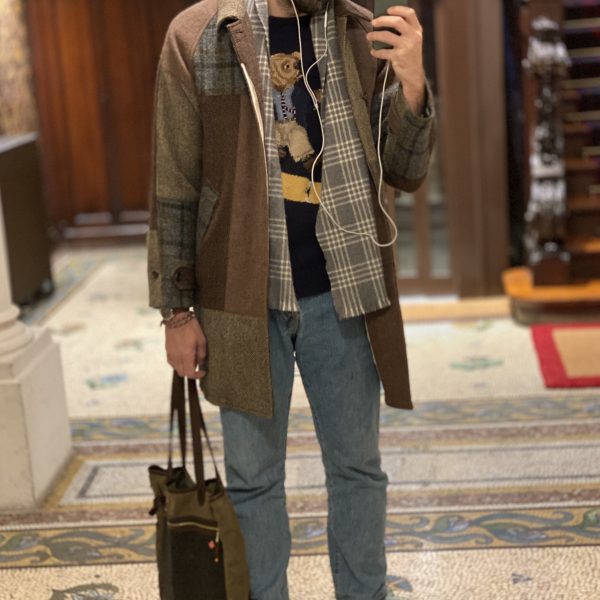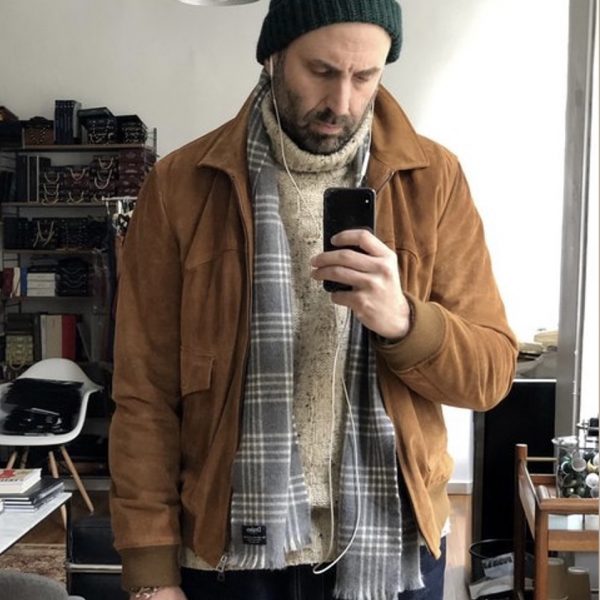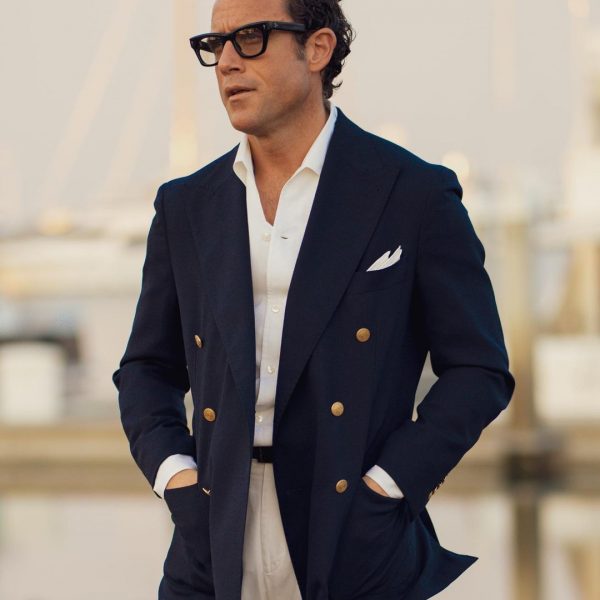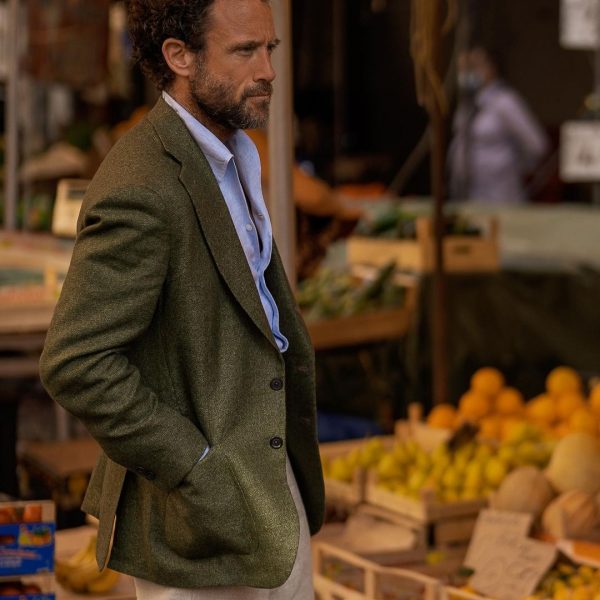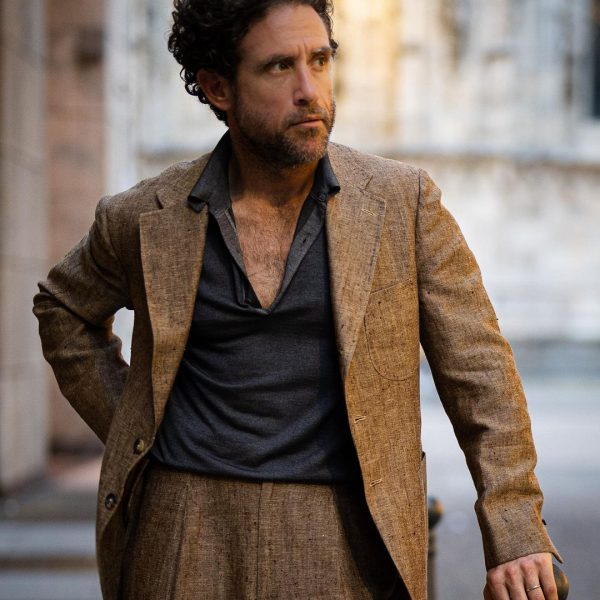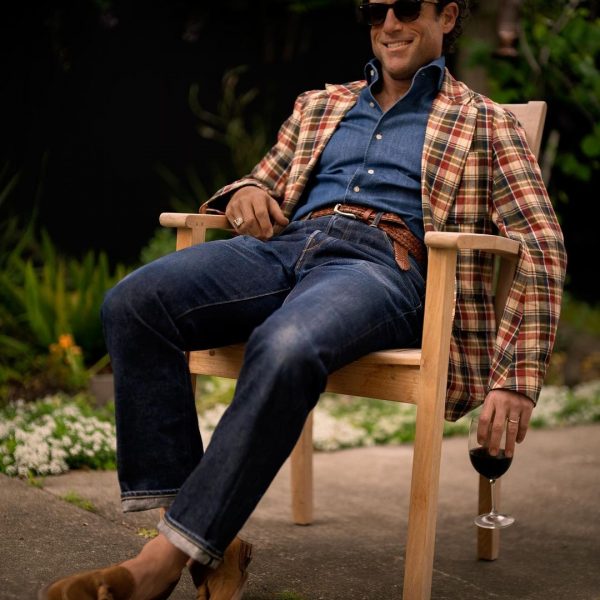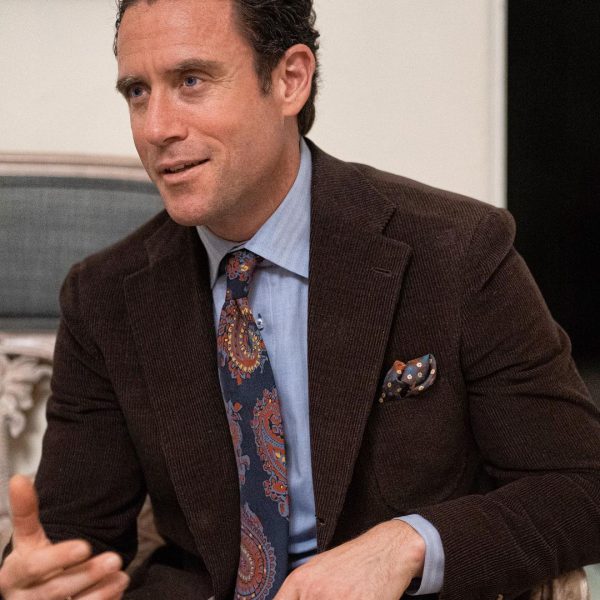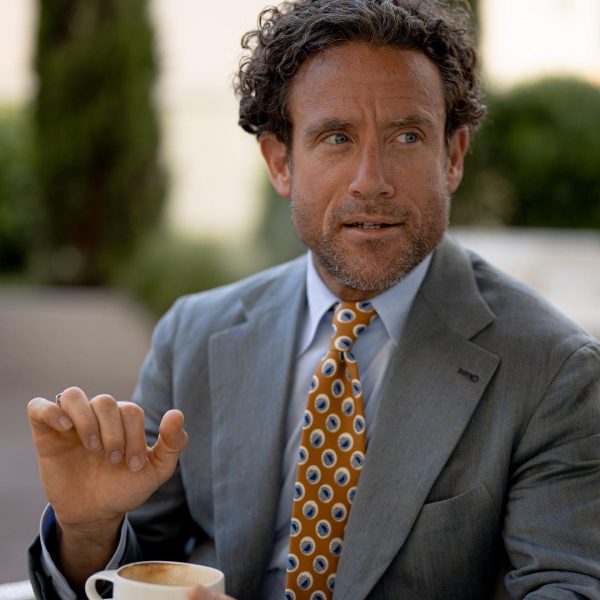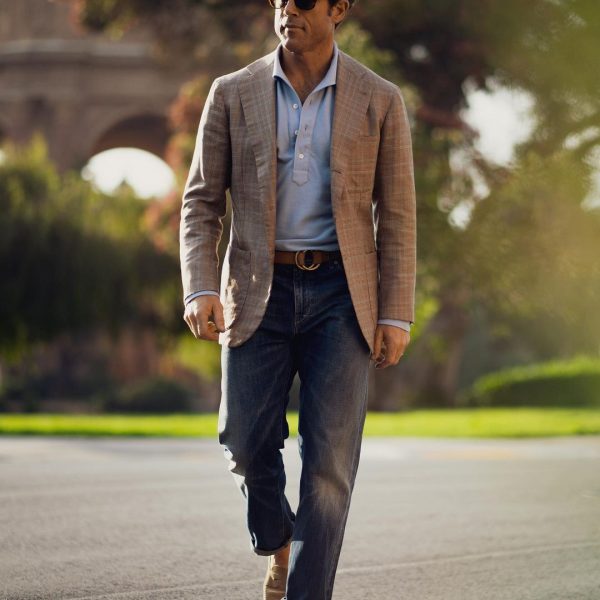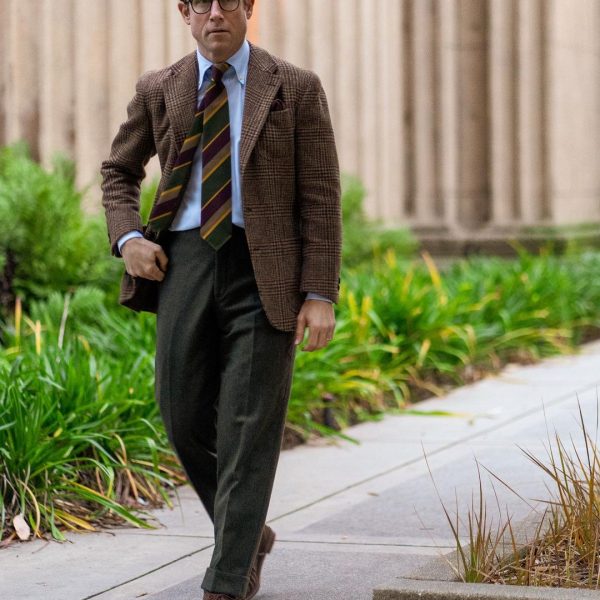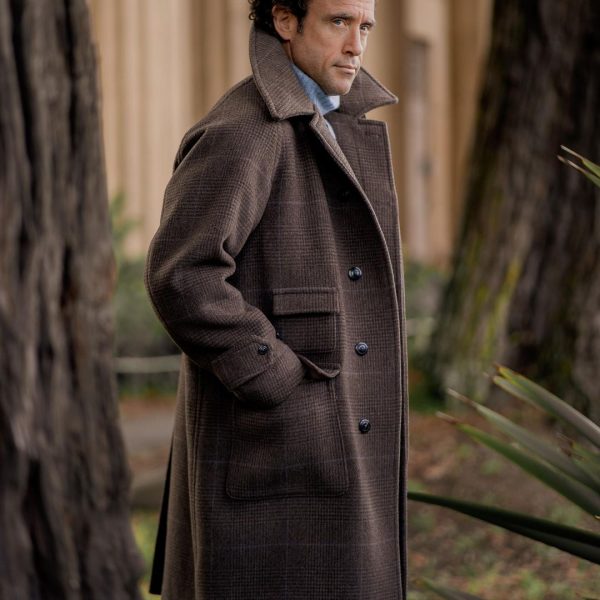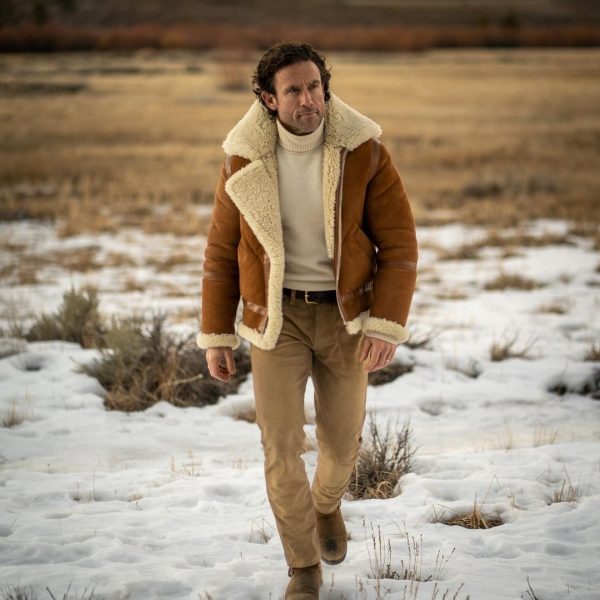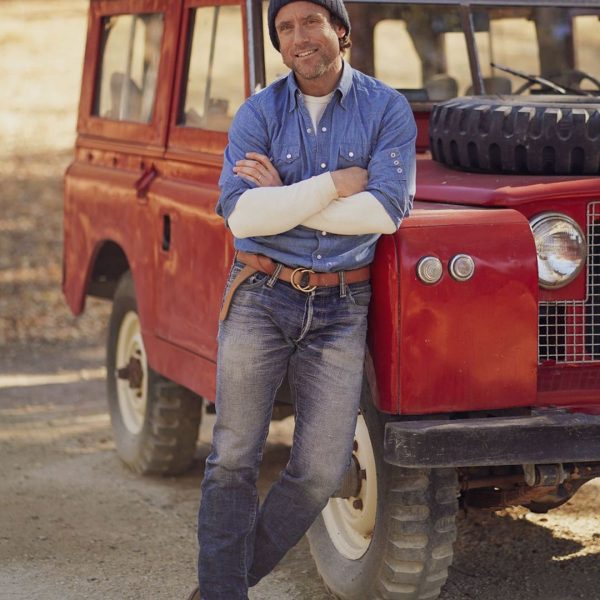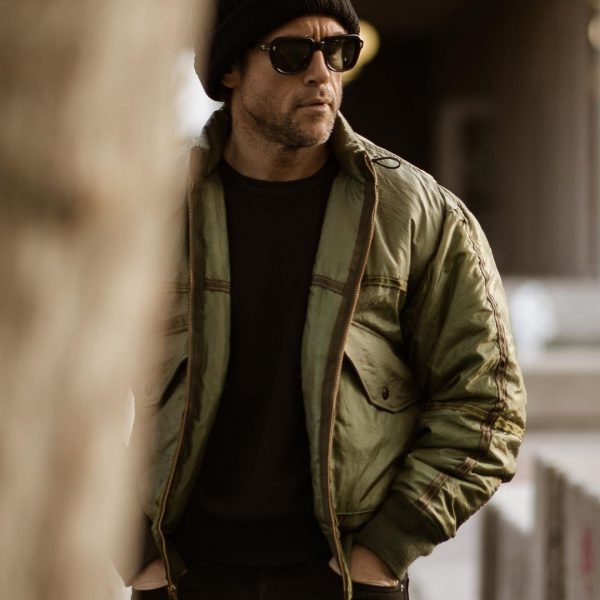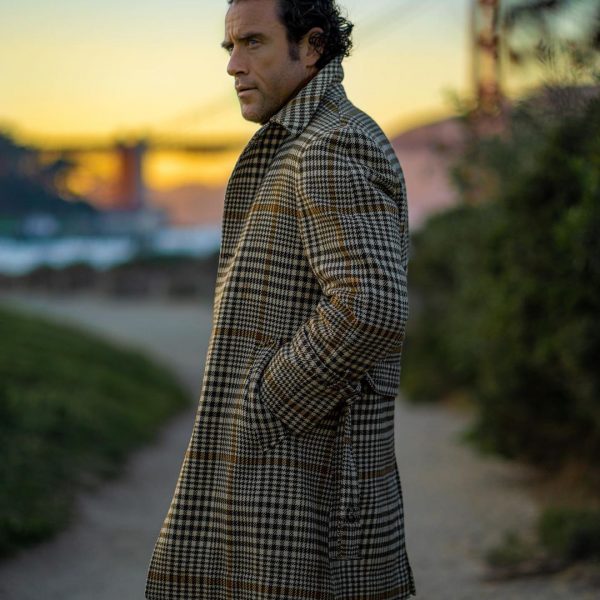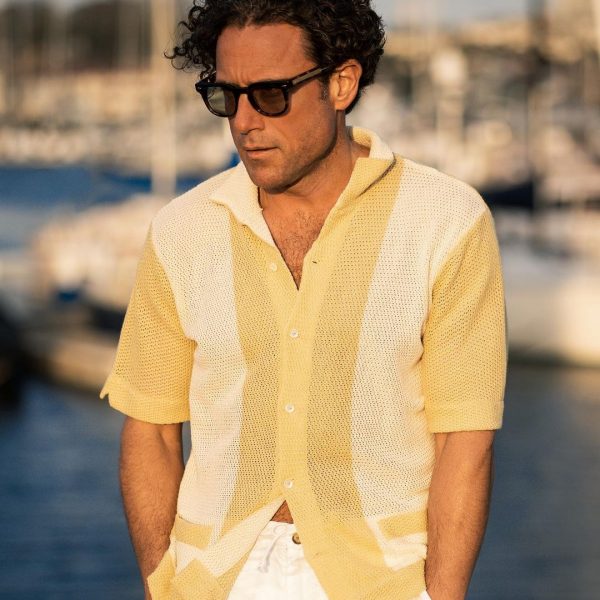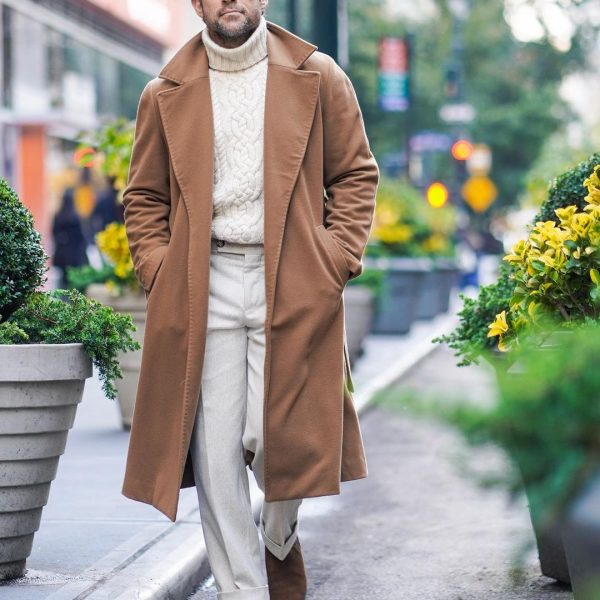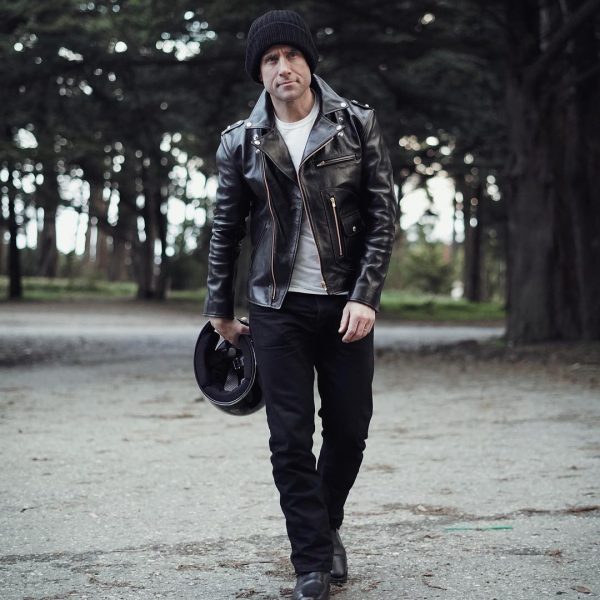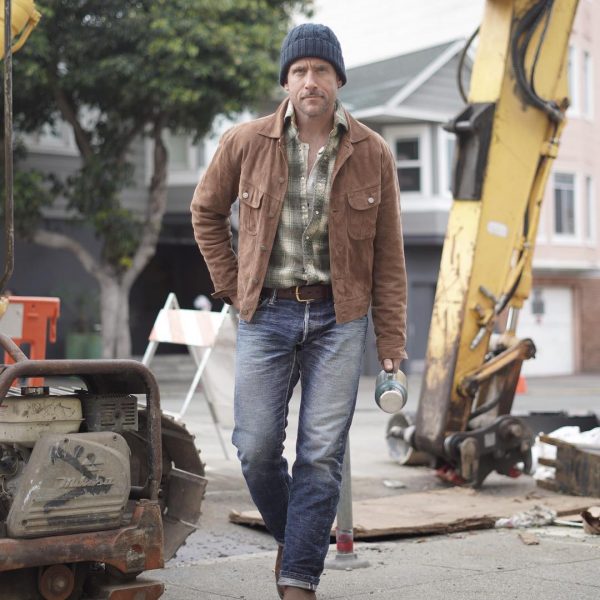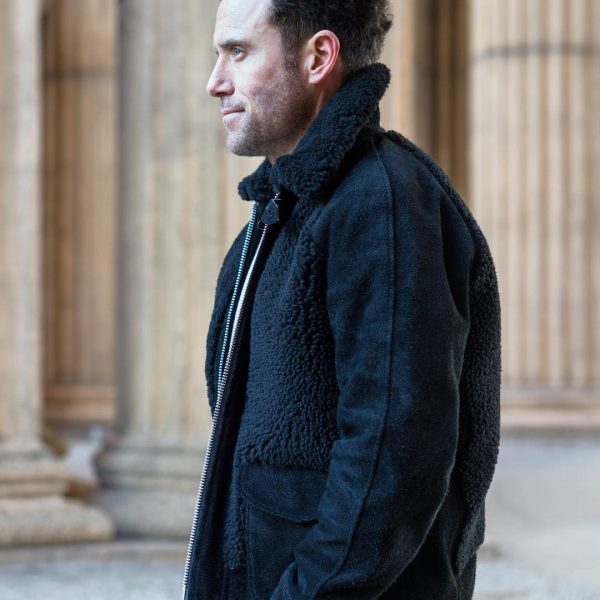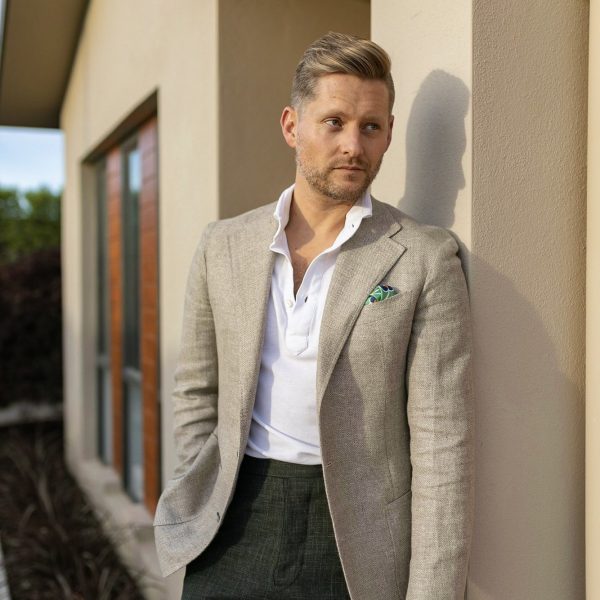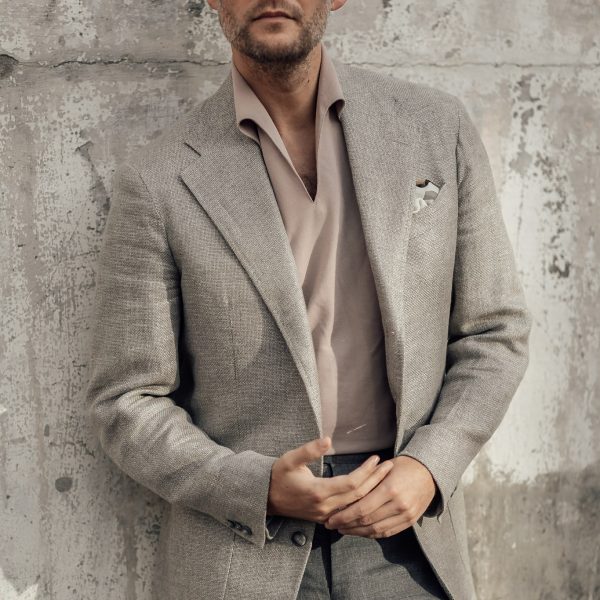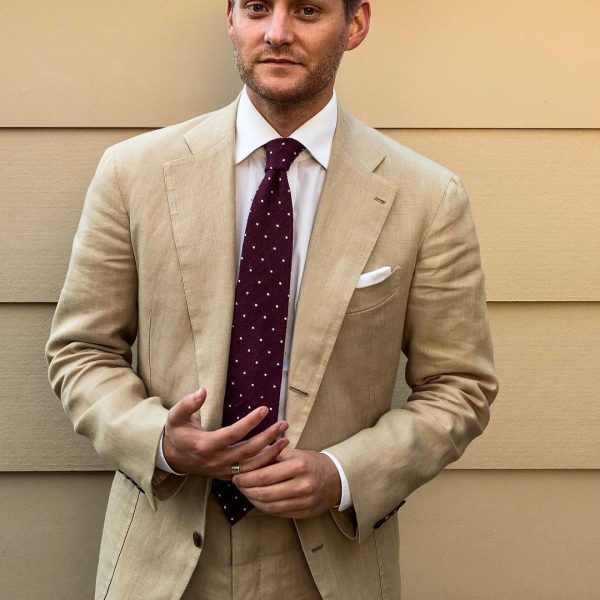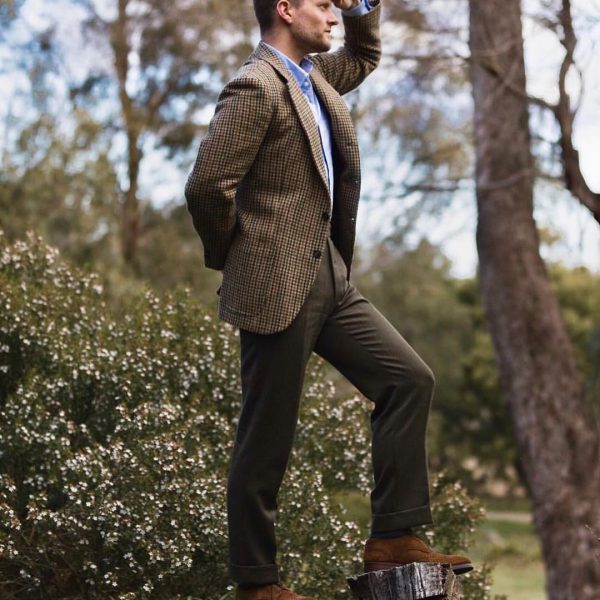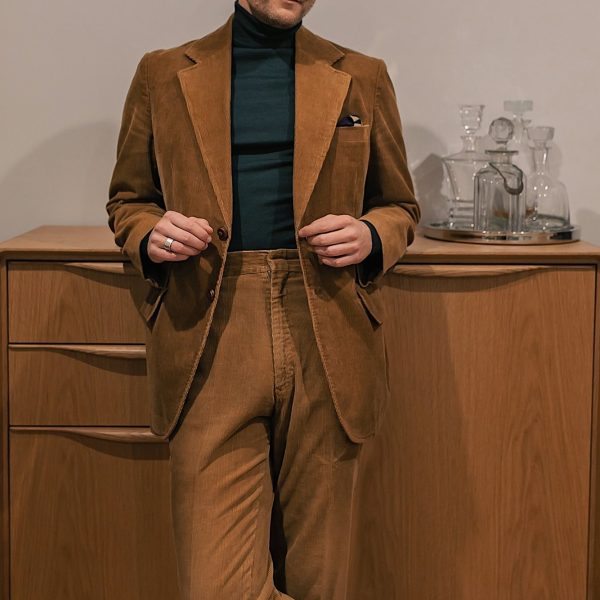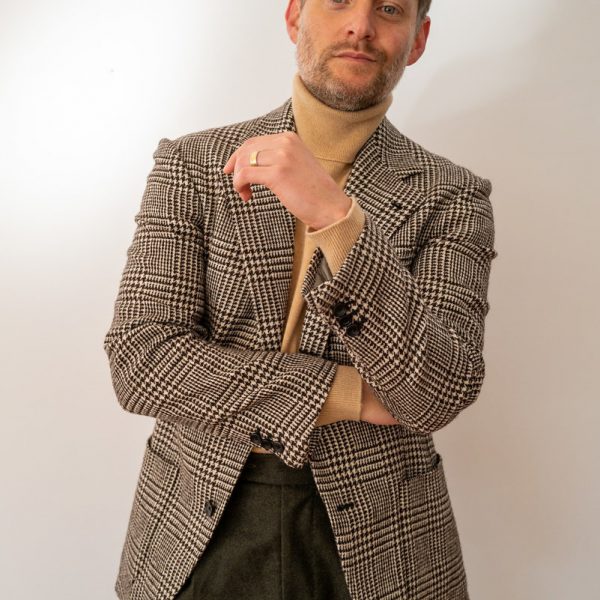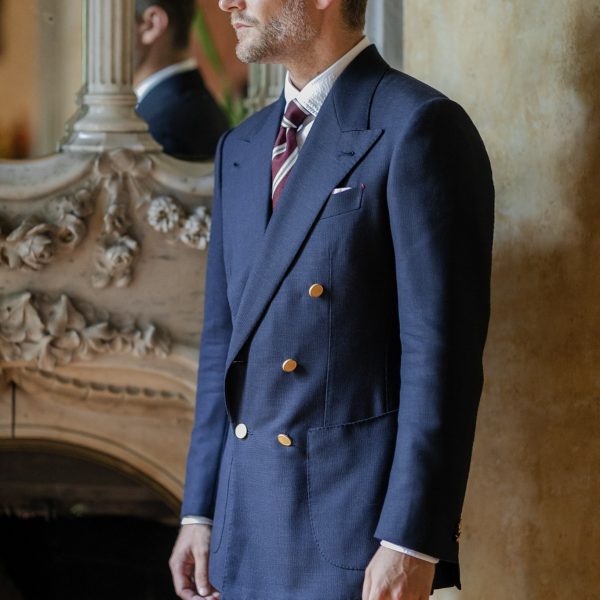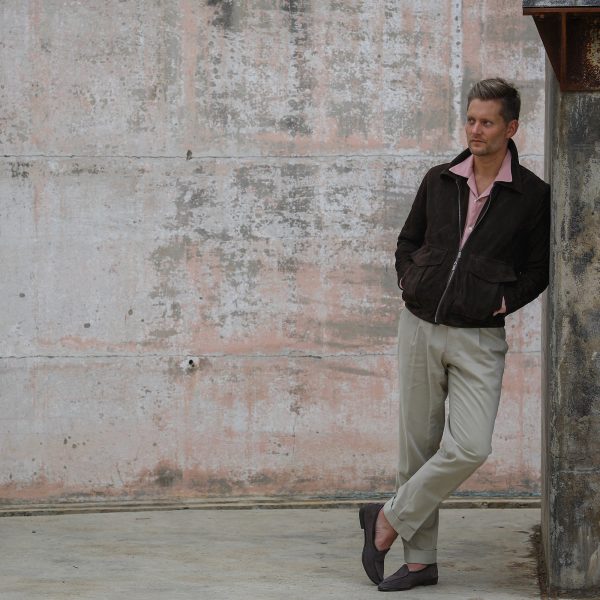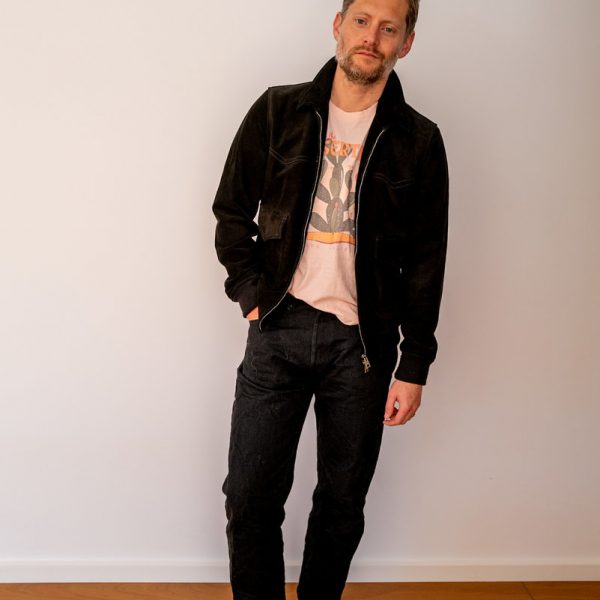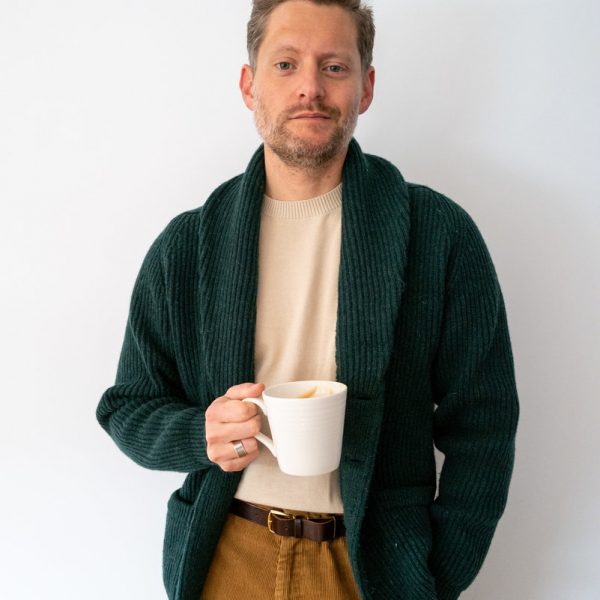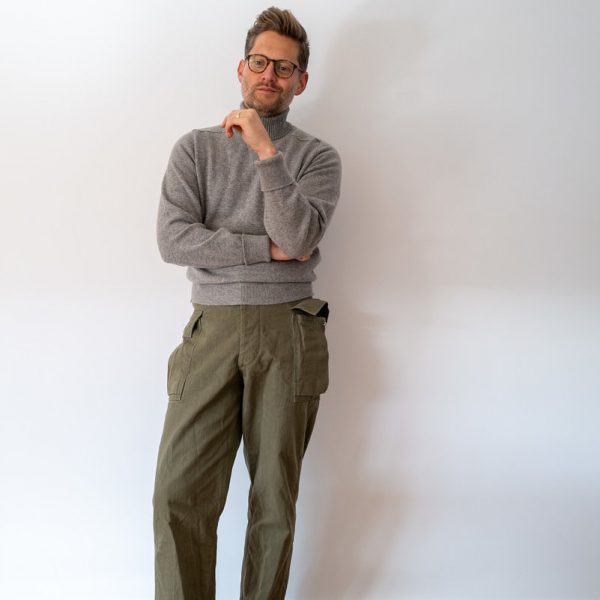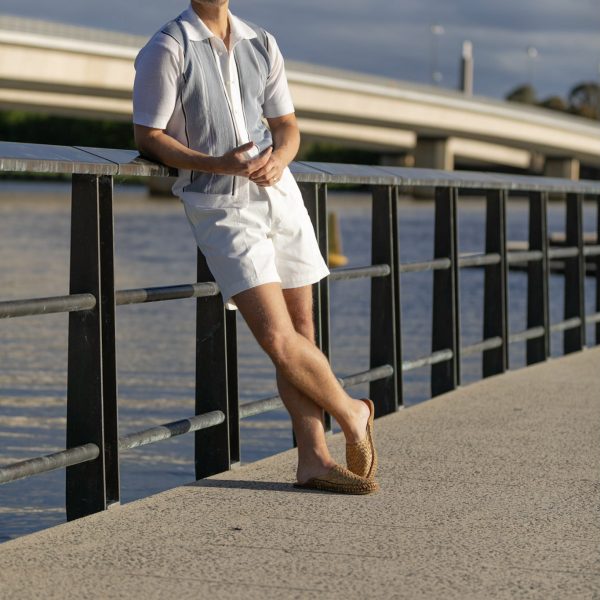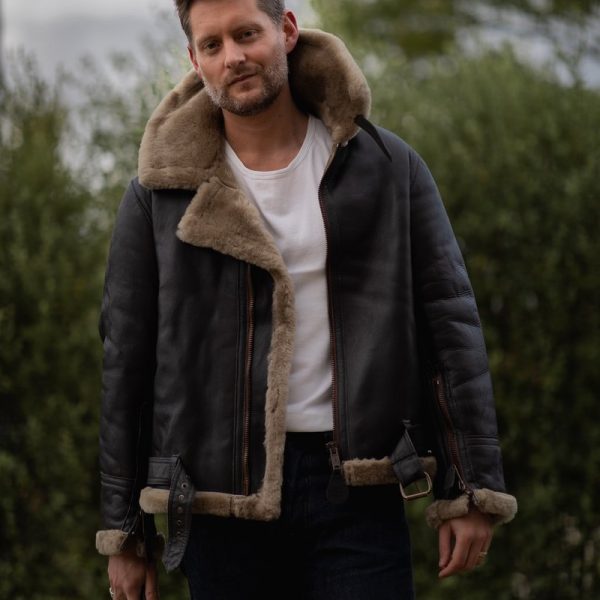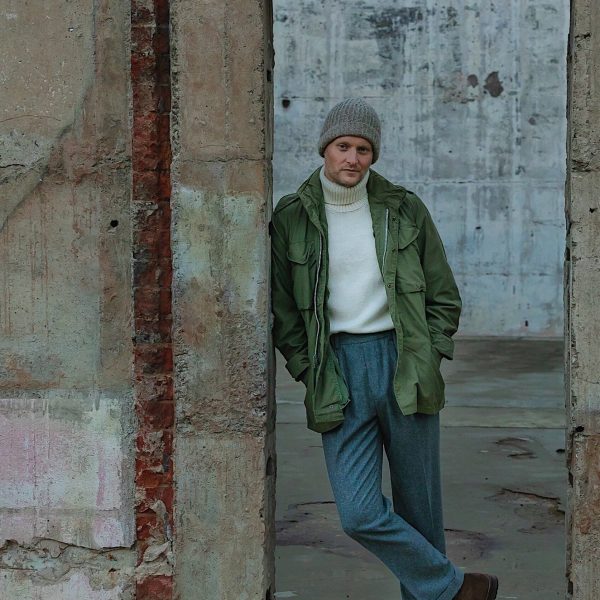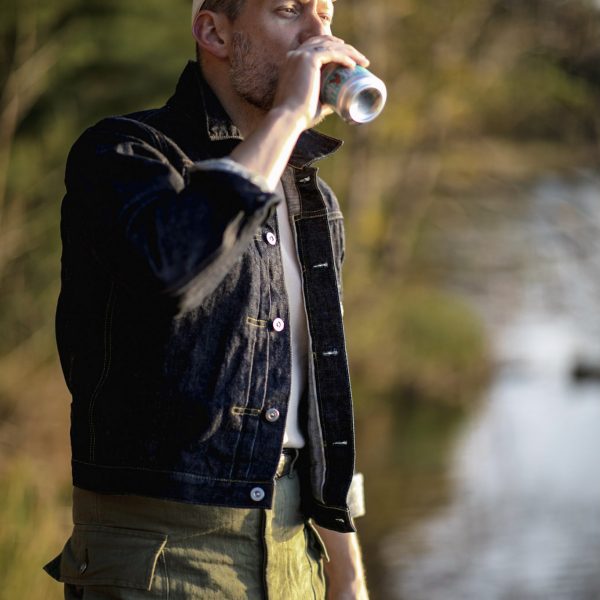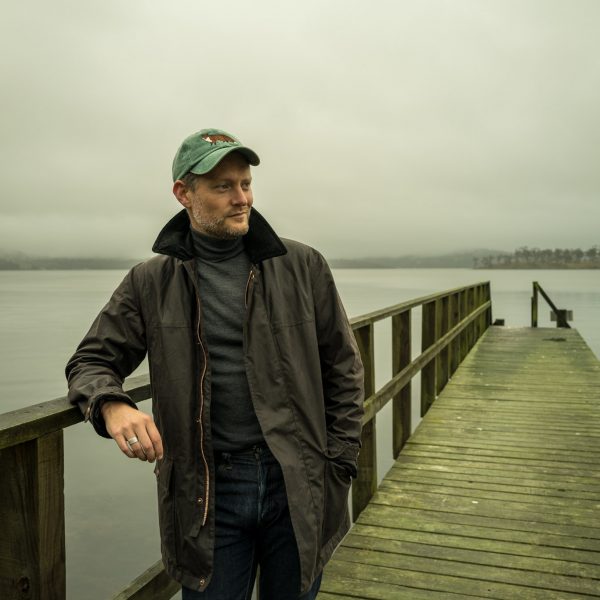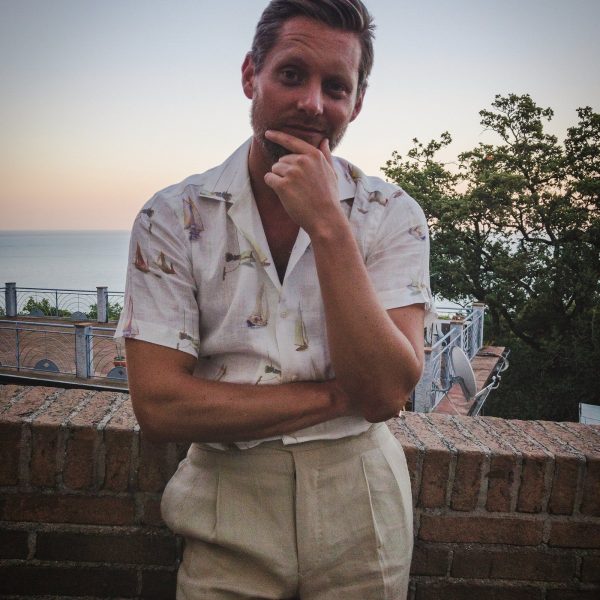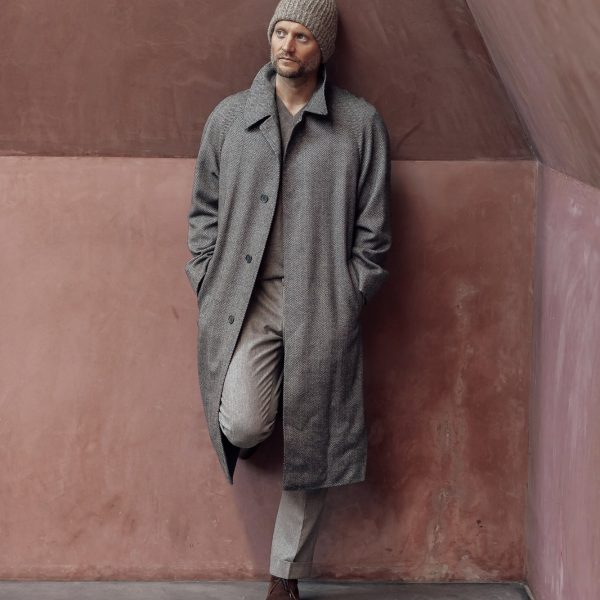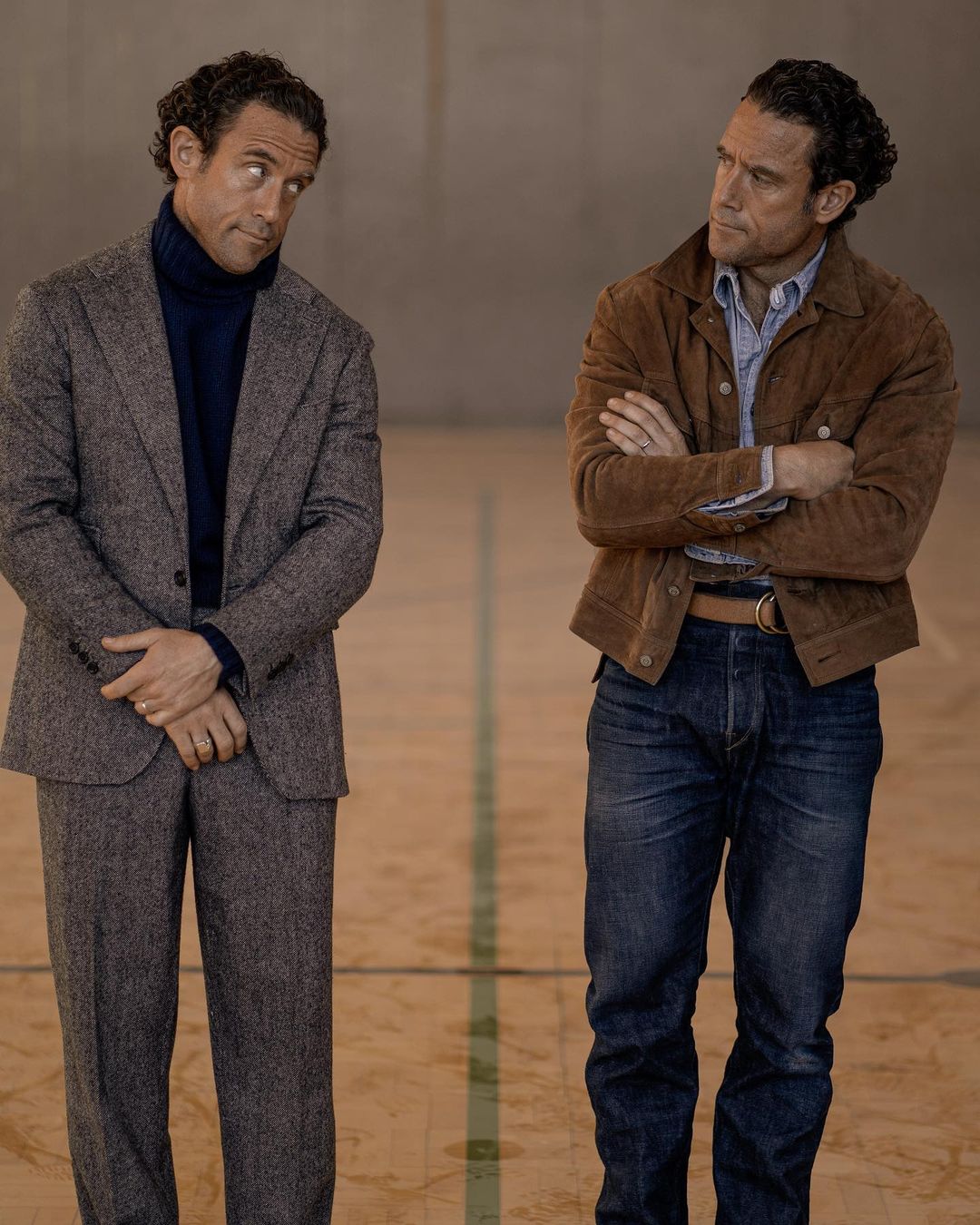
The men’s style community is mostly split into two camps: diehard traditionalists who scowl at anything casual or fashionable, and then casualwear groups that think traditionalists are too fusty and fussy. Often, these groups define themselves as “not like the other” — a divide that probably goes back to the culture wars of the 1960s. But some of my favorite dressers over the years are people who can bridge this divide. They may know how to dress very conservatively and classically, but they’re also interested in other things.
This past week, I interviewed three such figures: Greg Lellouche of No Man Walks Alone, Peter Zottolo of Plaza Uomo US (and frequent PTO subject), and PTO reader Charlie in Australia. Since he used to work as an investment banker on Wall Street, Greg knows his way around a classic, tailored rig. He used to get his bespoke suits from tailors such as WW Chan and special ordered his dress shoes from Vass. But even before he started his store, he wore brands such as Stephan Schenider and Nigel Cabourn on the weekend. Similarly, Peter wears rugged chambray shirts and raw denim jeans to his job as an electrician. During his off-hours, he wears everything from soft-shouldered Sicilian suits to motorcycle jackets to Rick Owens. Charlie’s wardrobe leans more heavily on the classic side of the spectrum. Still, his wardrobe spans everything from Shetland sport coats and cavalry twill trousers to black Westernwear-inspired jackets and bold Jacques Marie Mage eyewear.
Online discussions about men’s style often center on some specific and overlapping themes: how to build a tiny capsule wardrobe or how to find one’s “true style.” I wanted to talk to these three guys about the opposite: how do you create a well-rounded wardrobe that includes different and disparate aesthetics? Do you have to create a narrow archetype to dress stylishly? Is it OK to be eclectic in your taste? Here’s what they had to say.
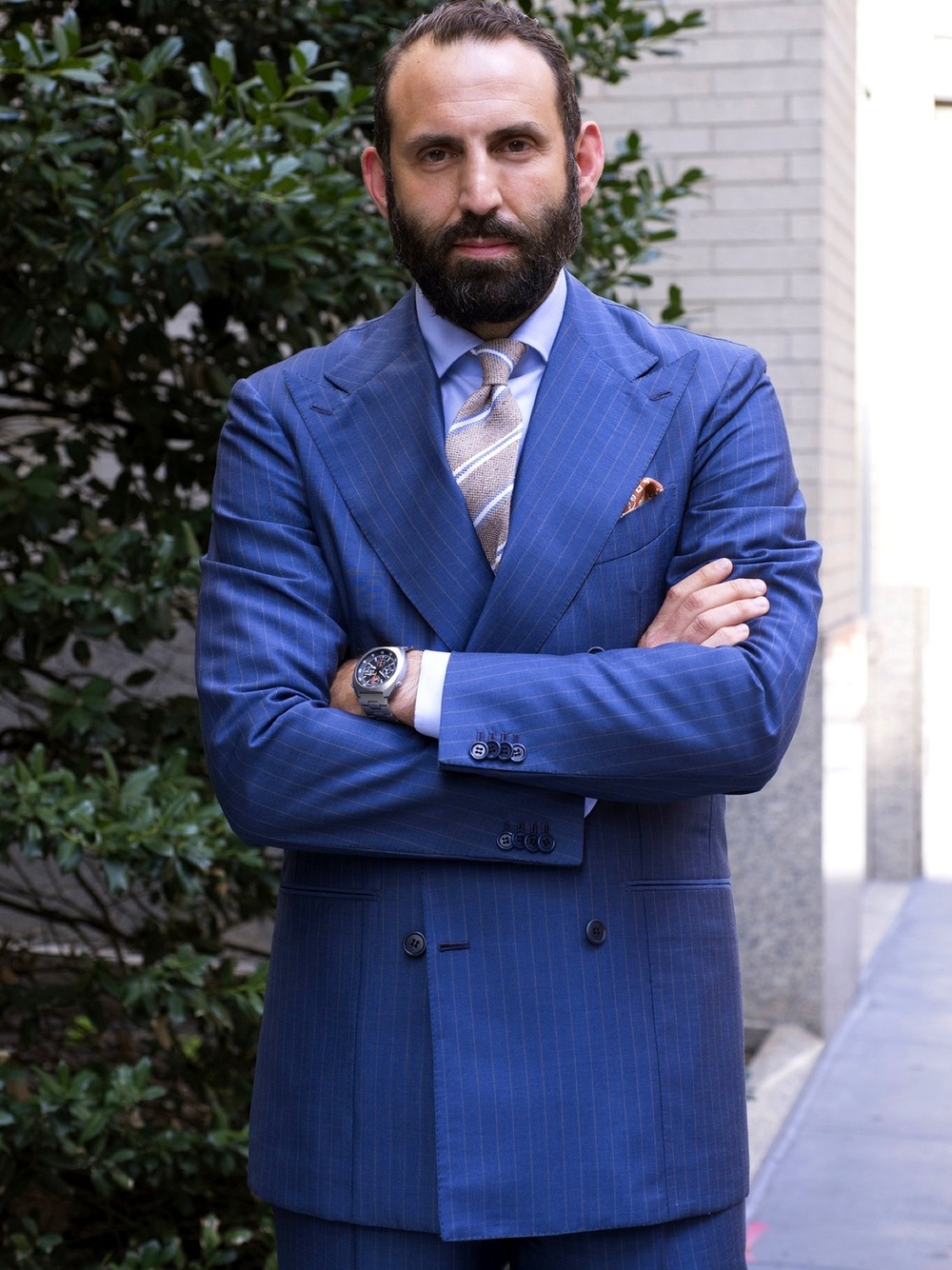

Greg of No Man Walks Alone
Derek: Men’s style used to be very Balkanized. There were sneakerheads, denimheads, techwear guys, and the more avant-garde dressers. Even Ivy Style existed as its own insular community. But in the last six or seven years, people are increasingly comfortable mixing and matching. It’s not unusual for someone to have Aldens sitting alongside Nikes in their closet. What do you think brought on this development, and do you think it’s ultimately good for men’s style?
Greg: I don’t think people ever dressed in just one way; it’s more that they used to pay attention to only one facet of their wardrobe. A guy might spend a lot of money on bespoke suits, but he would still have casualwear for the weekend. His casualwear would just be terrible, for lack of a better word. He might only have one Barbour jacket, some random sportswear he’s collected over the years, and a pair of jeans he doesn’t care about. His casualwear was an afterthought, but it’s not like it didn’t exist.
A couple of things have changed. First, office dress codes have become more relaxed, which has forced many “suit guys” to adopt more casual clothes. Second, the internet has exposed us to a much wider range of things. In the past, you might only get a few dozen highly curated images per month through a GQ spread. Nowadays, we’re getting served thousands of images per day online, particularly if you’re on Instagram. And when you see something more often, you become more open to it. You might see an image and think, “Oh wow, that looks cool. I hadn’t thought of wearing something like that.” Your mind then opens up, and you’re encouraged to explore more.
I think this development has been great for men’s style. I often draw the parallel between what we like in clothing and everything else. Of course, some people only eat pasta or only listen to one type of music. But most people have a diverse set of interests and allow themselves to be open to new things. Imagine stepping into a home where everything is perfectly curated as mid-century modern — it would be kind of lame. How can someone only like one type of music, one type of food, or one type of art? I think the same is true for clothing. There’s no reason to not let yourself enjoy other things, regardless of how they’re categorized or labeled.
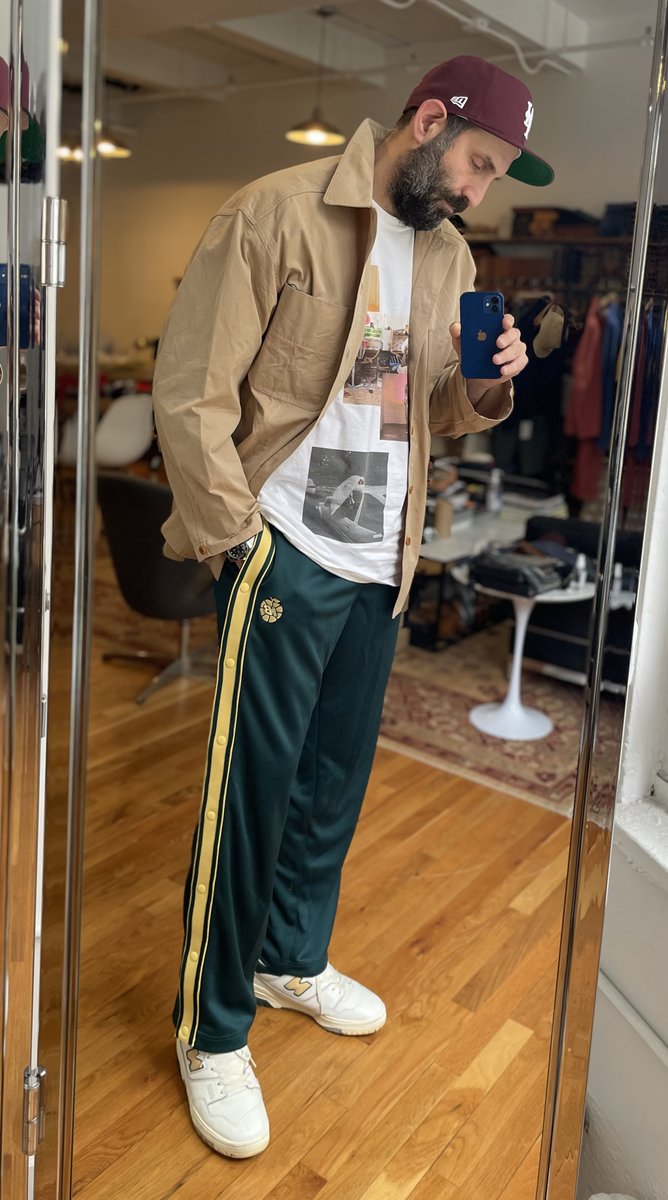
Derek: Some people feel that you should dress not only for your body type, but also for a persona. In other words, your clothes should be a reflection of your personality, interests, and background. Your wardrobe spans everything from conservative suits to streetwear to workwear. Do you think it’s possible to dress for a persona when you have such an eclectic wardrobe?
Greg: It comes back to this idea of “what is a person?” We’re all multi-faceted individuals. I like hip hop, so sometimes I may adopt a style cue from that ’90s hip hop era. But I don’t only like hip hop. The idea that you can communicate your entire being through an outfit seems absurd to me. If you do that, you’re only really communicating one facet of yourself.
For me, it makes much more sense to dress for how you feel for the day. Your style might change from week to week, month to month. You might wear sneakers for a while, and then the next month, not want to wear sneakers at all. I don’t think those decisions go against the idea of having a personality. In fact, they’re a better reflection of your personality. You can dress in a way to communicate a style persona, but that’s an image you’re projecting out to the world. A singular, narrow wardrobe will never reflect the complexity of everything you’re about.
Derek: That’s very interesting. So, for example, Eugene Rabkin of StyleZeitgeist dresses in a very dark, avant-garde way. He’s done so consistently for many years. It sounds like you’re saying this is more about creating an image, not necessarily communicating our authentic selves. People are more than just an “Ivy Style guy” or “Rick Owens guy.”
Greg: I think so. Some people wear turtlenecks all the time, or they dress like a mid-century architect all the time. I’ve heard some people say that, when your clothes are neutral, it allows your personality to come through better. But all you’re doing is creating a facade; that narrow wardrobe doesn’t reflect all the complexity that’s inside you. I think it’s perfectly fine to wear one style all the time, but that shouldn’t be confused with your style being a better reflection of you as a person.
(You can follow Greg on Instagram and through his store, No Man Walks Alone)
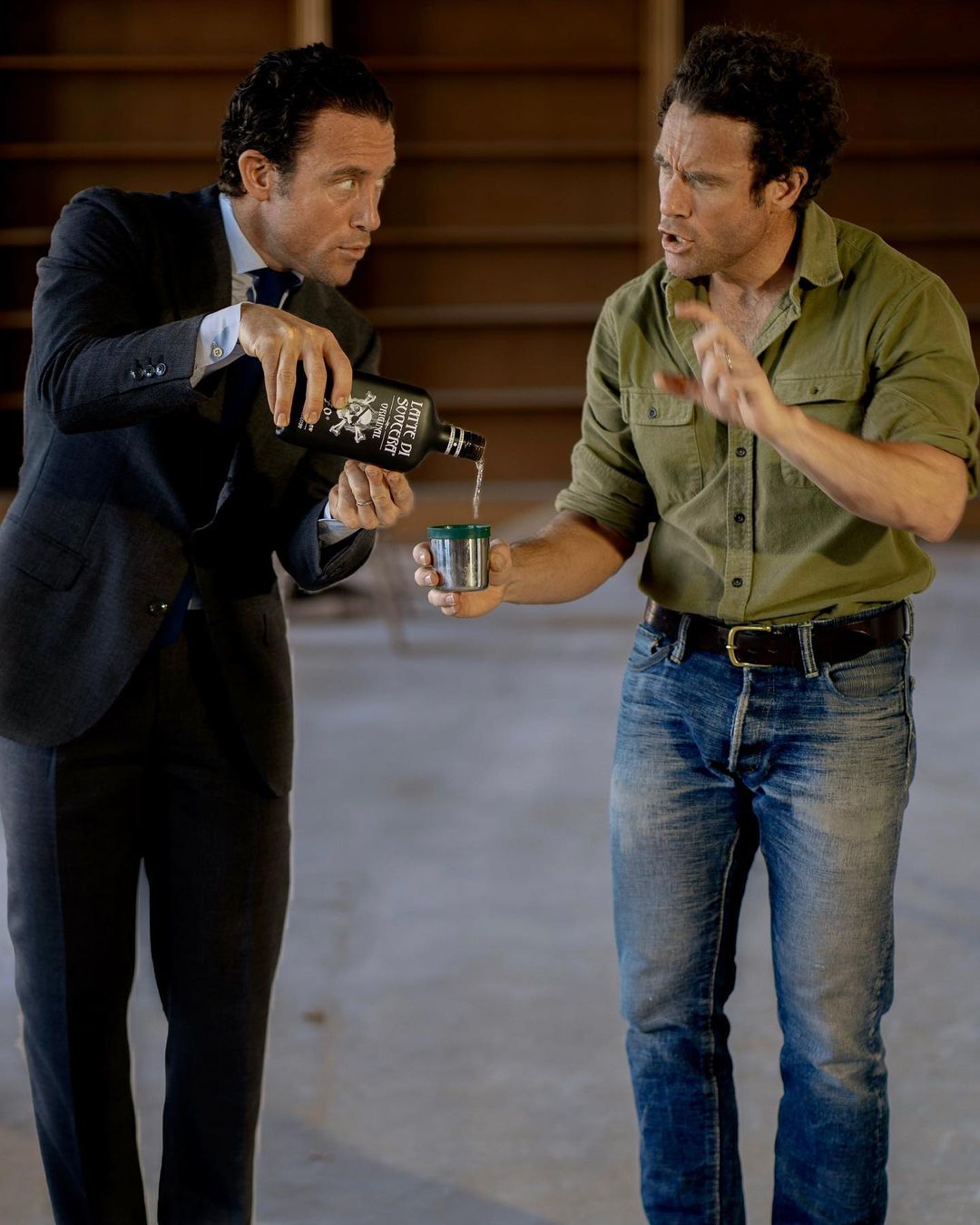

Peter of Plaza Uomo US
Derek: Many guys struggle with the idea that they might be playing “dress up” if they wear disparate aesthetics. How do you feel about this? Is it possible to wear such disparate styles and still be authentic? Is it bad to play “dress up?”
Peter: I totally understand why some guys feel this way. Up until fairly recently, men’s dress was governed by time, place, and occasion. Even when I was a young adult, wearing a biker jacket meant that you ride a motorcycle.
To be honest, I still dress according to some of these dimensions. I’m fortunate to live a life with varied activities that lend themselves to certain clothes. I work as an electrician; I attend religious ministries and meetings. I also help produce a menswear magazine. So it’s easier for me to wear workwear and tailoring.
That said, I think it’s great that some guys can wear these clothes without those associations. You can appreciate style on its own terms without being hung up on how certain clothes were historically worn. I think it’s just about experimenting and finding things that are “you.” I wrote off black leather jackets for decades, as I always considered myself a more classic “brown leather” guy. But then Antonio Ciongoli designed a black grizzly jacket, which is normally brown, so I decided to try it out. Shortly after I received it, I found black leather jackets to be so versatile, I now have several.
Derek: I often think of style as a kind of language. You have to be able to work within a set of rules to communicate something, but you also want to express some individuality. In this sense, people who are good at wearing different aesthetics are “multi-lingual” — they know how to communicate in different “visual languages.” How does one develop that kind of ability?
Peter: I think it’s about reading, watching, and practicing. I learned how to be an electrician in much the same way: by combining classroom time with on-the-job training. Reading theory is one thing, but putting it into practice is another. A good first step is seeing how other people wear different styles well. Pay attention to how colors, patterns, fabrics, and silhouettes play with each other. If you have something similar in your closet, try to create a similar outfit. Take a photo of yourself and post it online to get feedback, or send the image to someone whose taste and opinion you value. If they give you suggestions on how to improve, see if you can follow through to complete “the look.” If you like how you look in that aesthetic, keep learning about it. Don’t be afraid to make mistakes — it is just clothes, after all. Like any language, pretty soon you’ll be comfortable enough to express yourself.
(You can follow Peter on Instagram. He’s also the newly appointed editor of the US edition of Plaza Uomo. A digital version of his inaugural issue can be found online.)
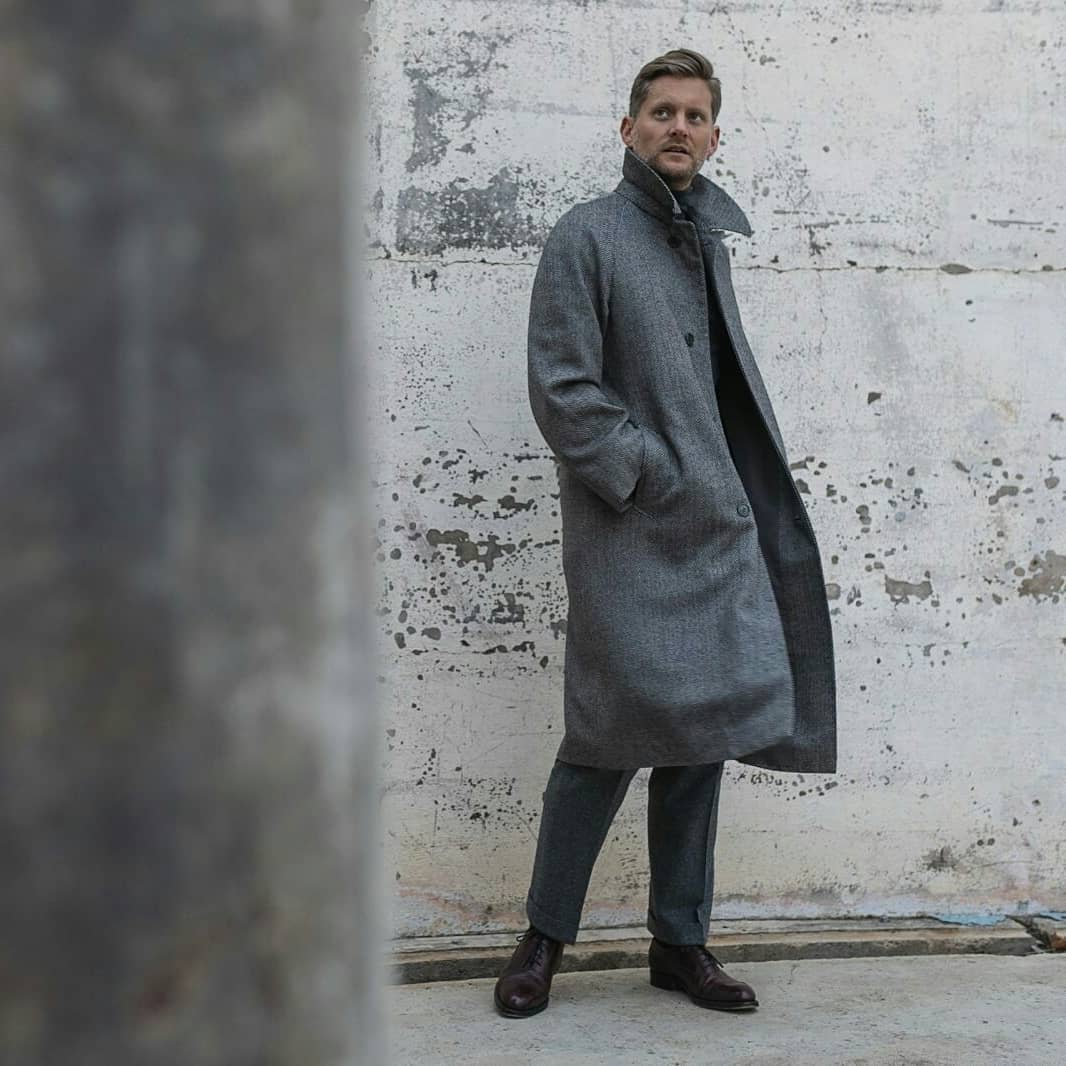

Charlie in Australia
Derek: Many guys are attracted to the idea of having a uniform — going to the same tailor, ordering the same things, and relying on the same, comfortable combinations every day. But there’s also power in dressing appropriately for different environments or expressing yourself in different ways. Do you think there are some advantages to having a more diverse wardrobe? Is it harder to dress well when you have so many options in a closet?
Charlie: I think uniforms appeal for two reasons. The first is to take the decision-making process out of something as “trivial” as getting dressed – to signal that one is so singularly focused on the serious, significant things in life that one couldn’t possibly have the mental energy to spare on what to wear. The second centers on the concept of authenticity – that one’s external, clothed appearance is an extension or reflection of some “true” inner self. For these people, deviating from the uniform is tantamount to spiritual betrayal.
I’ve found both of these unsatisfying in my process. Readers of this site will understand that clothes are things we choose to think about — they bring joy, spark imagination, and lead us down rabbit holes. Removing the thought process and filling one’s wardrobe with identical black turtlenecks makes the overall experience dull and unsatisfying.
Likewise, I think the obsession with authenticity and “true identity” is overrated. Bring on novelty, diversity, experimentation, and play! It may lead to one finding themselves in a place where they have four options for black tie, but only a single, lonely OCBD; or wearing a three-piece suit one day and graphic tees the next (both recent experiences!). But give me a bunch of Marie Kondo joy-points any day over pragmatism. I want enough variety in aesthetics to allow me to dress satisfyingly and appropriately for whatever life throws at me, and enough choice within those aesthetics to experiment with color, texture, and silhouette.
Derek: There are very few guys with well-rounded wardrobes. Often, someone who’s good at dressing casually isn’t so good at wearing tailored clothing. Likewise, guys who primarily wear tailored clothing struggle to dress casually. Why do you think this is, and how does one become a more well-rounded dresser?
Charlie: It’s interesting, isn’t it? As someone who spends a large chunk of his time learning the rules of tailoring and classic menswear, the transition to casual dressing continues to be difficult. I think it comes down to the emphasis on adhering to rules in classic menswear versus breaking the rules in some casual styles. I think one’s ability to have, and feel comfortable in, a well-rounded wardrobe comes down to how much time you’re willing to invest in the process of learning and experimenting on both sides of the fence.
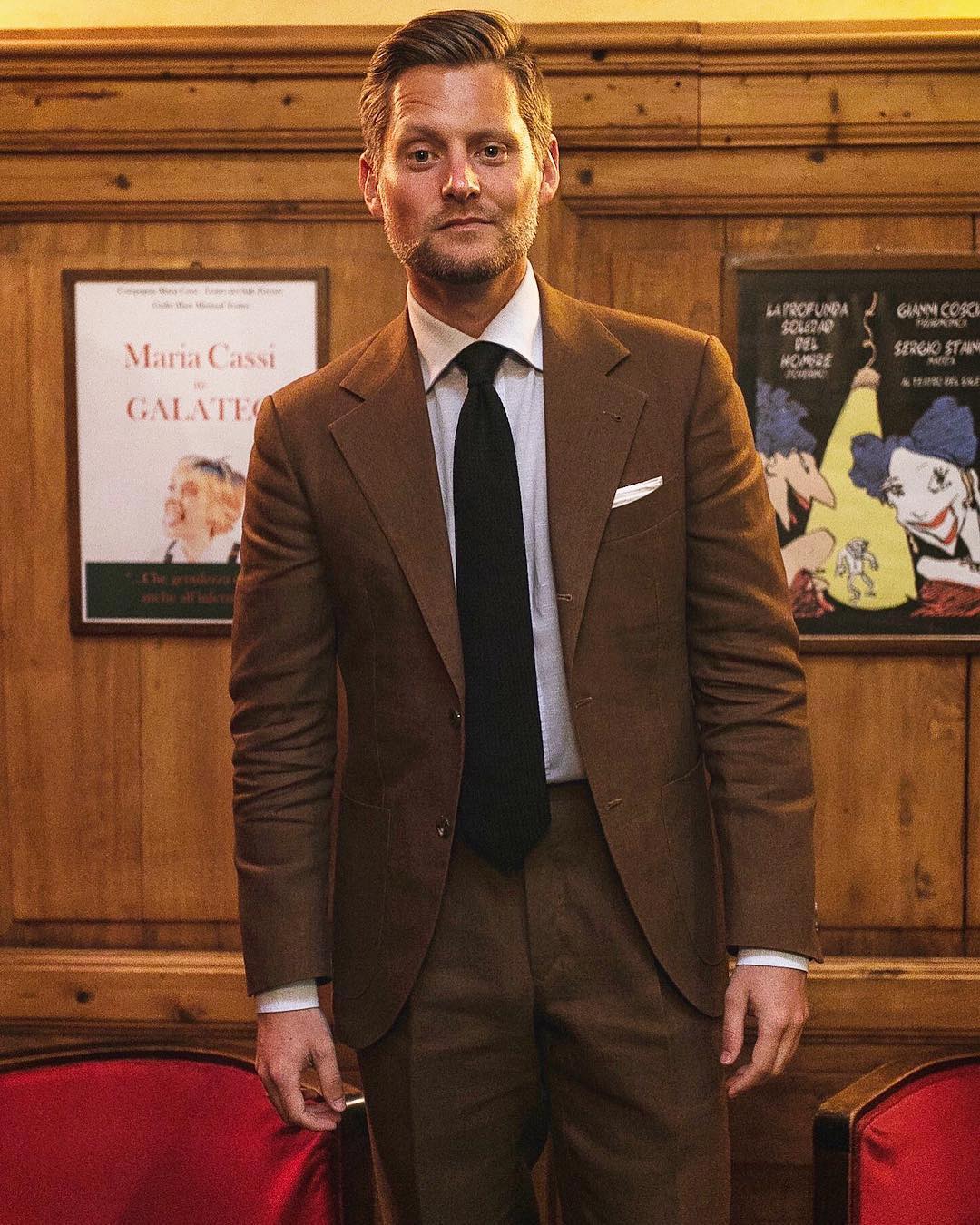

It’s like cooking – French chefs don’t automatically make great Japanese food unless they take the time to combine pre-existing skills and techniques with newly acquired knowledge. Just as we recognize the differences, it’s important to recognize similarities. Both classic and casual dressing reward those who spend time learning about and experimenting with silhouette, congruency, color, and texture. Consistently good results come to those who have a clear vision and the cultural and aesthetic understanding needed to execute it.
Derek: Men who wear classic tailored clothing often gravitate towards those styles because they’re attracted to the ideas of timelessness, craft, and a rules-based system of dressing. Do you think it’s possible to find those values in other aesthetics, or do you mostly abandon them when exploring different styles? Is there such a thing as timelessness or craft when it comes to casualwear?
Charlie: These are very powerful ideas, and it can be easy to get caught up in them. I think they’re wrapped up in other powerful values, such as commitment to work, dedication to quality, and even a vague sense of community. All of these things are increasingly rare in today’s world. Unfortunately, they’ve also be co-opted for status and sales. Whether it is the promise of something “artisanal,” a social, political, or environmental good, or the power to confer “gentlemanly” powers, timelessness and craft now underpin an economy of conspicuous consumption. That’s a long way of saying that while I still very much value tradition, quality, and craftsmanship, I’m much more sensitive nowadays to how such values can be used for marketing.
Is it possible to find them in other aesthetics? Of course! Just as my decision to buy a particular suit from a particular tailor in a particular cloth is based on my perceived notions of quality and craft, so are my choices to buy denim from Bryceland’s or a beautiful replica 1950s knit from Scott Fraser Collection.
I’ll add another idea to your list – romanticism. So much of what appeals to me across both the tailored and casual spectrums – and what generally produces the best results — are combinations that inspire imagination and offer the promise of escape to a particular time or place. That can be something like a tailored outfit inspired by the 1930s French Riviera or a Westernwear look inspired by the 1970s. And in the current environment of restricted movement, doom-scrolling, and general awfulness, anything that inspires this kind of mental transportation can only be a good thing.
(You can follow Charlie on Instagram)
